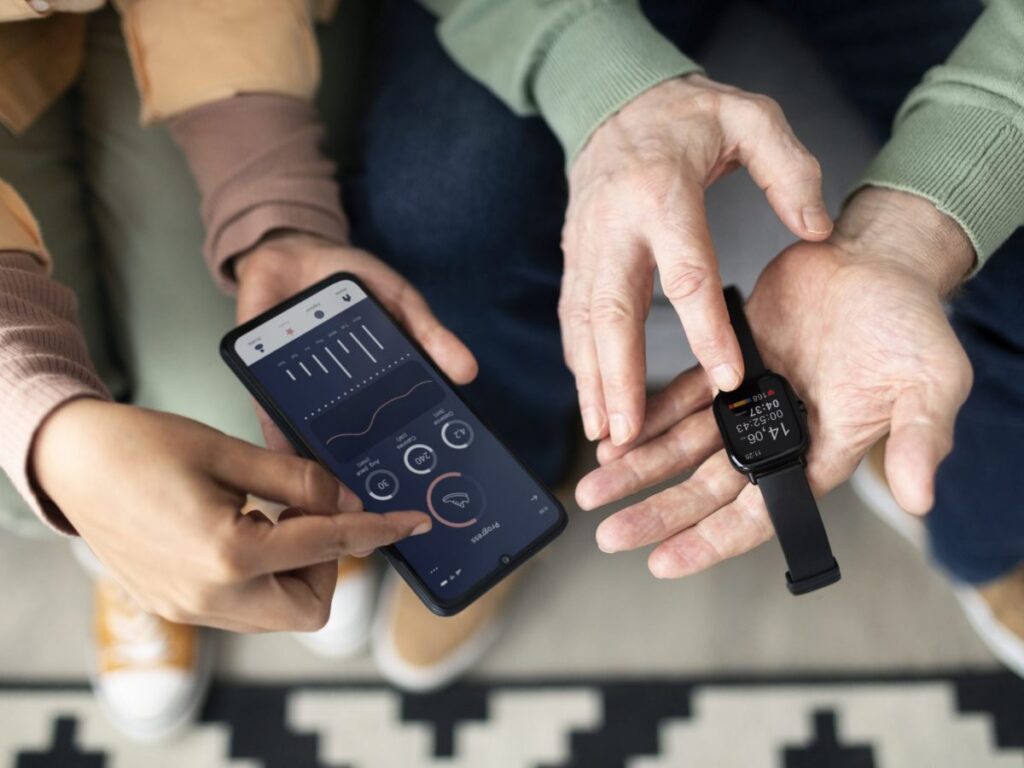
In the rapidly evolving landscape of healthcare, digital health technologies have emerged as powerful tools for monitoring, managing, and improving health outcomes. Among these technologies, wearable devices stand out for their ability to collect real-time biometric data, empower individuals in managing their health, and facilitate personalized healthcare interventions. Beyond simple step counters and heart rate monitors, wearable devices are increasingly incorporating advanced sensors, artificial intelligence (AI), and connectivity to revolutionize healthcare delivery. This article explores the impact of wearable technology in digital health, current innovations, challenges, and the future potential to transform healthcare delivery and improve patient outcomes.
The Rise of Wearable Technology in Healthcare
Wearable devices encompass a broad range of gadgets worn on the body that collect and transmit data about various physiological parameters. Initially popularized by fitness trackers, such as Fitbit and Garmin, wearable technology has expanded to include smartwatches, continuous glucose monitors, ECG monitors, smart clothing, and even implantable sensors. These devices utilize sensors to monitor vital signs, activity levels, sleep patterns, blood glucose levels, and more, providing users and healthcare providers with valuable insights into health and wellness.
Health Monitoring: Wearables enable continuous monitoring of key health metrics, such as heart rate, blood pressure, respiratory rate, and blood oxygen levels. This real-time data can help detect abnormalities early, monitor chronic conditions, and track progress in achieving health goals.
Fitness and Activity Tracking: Beyond basic step counting, wearables offer features like GPS tracking, calorie expenditure estimation, workout performance analysis, and personalized coaching to support physical activity and fitness goals.
Chronic Disease Management: Wearable devices play a crucial role in managing chronic diseases such as diabetes, hypertension, and cardiovascular disorders. Continuous glucose monitors provide real-time glucose readings, while smart devices can monitor blood pressure trends and alert users and healthcare providers to potential complications.
Remote Patient Monitoring: In the era of telehealth and remote care, wearable technology facilitates remote patient monitoring (RPM), allowing healthcare providers to monitor patients’ health status outside traditional clinical settings. This is particularly beneficial for elderly patients, individuals with chronic conditions, and post-operative care.
Personalized Medicine: Wearable data combined with AI and machine learning algorithms enable personalized medicine approaches. By analyzing individual biometric data over time, healthcare providers can tailor treatment plans, medication dosages, and lifestyle recommendations to optimize patient outcomes.
Technological Advancements and Innovations
Recent advancements in wearable technology have expanded their capabilities and applications in healthcare:
Advanced Sensors: Wearables now integrate advanced sensors, including photoplethysmography (PPG) for heart rate monitoring, electrocardiography (ECG) for detecting heart rhythm abnormalities, accelerometers and gyroscopes for motion sensing, and environmental sensors for detecting pollutants or allergens.
Artificial Intelligence and Machine Learning: AI algorithms analyze vast amounts of biometric data collected by wearables to detect patterns, predict health outcomes, and provide actionable insights. Machine learning models can identify deviations from normal health parameters and alert users and healthcare providers to potential health risks.
Integration with Telehealth Platforms: Wearables seamlessly integrate with telehealth platforms, enabling remote consultations, virtual visits, and remote monitoring of patients’ health status. This enhances accessibility to healthcare services, particularly in rural or underserved areas.
Smart Fabrics and Implantable Devices: Advances in smart fabrics incorporate sensors directly into clothing or accessories, providing discreet monitoring of vital signs. Implantable devices, such as cardiac monitors and insulin pumps, offer continuous monitoring and therapeutic interventions for chronic conditions.
Data Interoperability and Connectivity: Wearables leverage wireless connectivity (e.g., Bluetooth, Wi-Fi, cellular) to transmit data to smartphones, tablets, or cloud-based platforms accessible to healthcare providers. Data interoperability standards ensure seamless integration with electronic health records (EHRs) and other healthcare IT systems.
Challenges and Considerations
Despite the transformative potential of wearable technology in healthcare, several challenges must be addressed:
Data Privacy and Security: Wearables collect sensitive health data, raising concerns about data privacy, unauthorized access, and compliance with data protection regulations (e.g., GDPR, HIPAA). Robust encryption, secure data storage, and user consent mechanisms are essential to protect patient information.
Accuracy and Reliability: Ensuring the accuracy and reliability of wearable data is crucial for clinical decision-making. Calibration of sensors, validation against gold-standard measurements, and continuous quality assurance are necessary to maintain data integrity.
User Engagement and Adherence: Long-term user engagement and adherence to wearables are critical for sustained health benefits. Designing user-friendly interfaces, providing personalized feedback, and integrating behavioral science principles can enhance user motivation and adherence.
Healthcare Provider Integration: Healthcare providers require training on interpreting wearable data, integrating it into clinical workflows, and making informed decisions based on actionable insights. Effective communication between patients and providers is essential for shared decision-making and care coordination.
Regulatory and Reimbursement Frameworks: Regulatory agencies must adapt to the rapid pace of technological innovation in wearables. Establishing clear guidelines for device safety, efficacy, and performance is essential for market approval and patient safety. Reimbursement policies should incentivize the adoption of wearable technology in clinical practice.
Future Directions and Potential Impact
Looking ahead, wearable technology holds immense promise for transforming healthcare delivery and improving patient outcomes:
Preventive Health: Wearables enable proactive health monitoring, early detection of health risks, and timely interventions to prevent disease progression.
Remote Care and Telemedicine: Remote patient monitoring using wearables expands access to healthcare services, reduces healthcare costs, and enhances patient convenience.
Patient Empowerment: By providing individuals with real-time health data and personalized insights, wearables empower patients to take an active role in managing their health and making informed lifestyle choices.
Population Health Management: Aggregate wearable data can inform population health initiatives, identify health trends, and support public health interventions aimed at reducing disease burden.
Research and Innovation: Wearable-generated big data fuels research advancements in epidemiology, clinical trials, and healthcare innovation, driving continuous improvement in healthcare practices and outcomes.
In conclusion, wearable technology represents a transformative force in digital health, offering unprecedented opportunities to monitor, manage, and optimize health outcomes across diverse populations. By addressing challenges related to privacy, accuracy, user engagement, and healthcare integration, stakeholders can harness the full potential of wearable technology to usher in a new era of personalized, data-driven healthcare. Embracing innovation, collaboration, and evidence-based practice will pave the way for a future where wearable devices play a central role in promoting health, preventing disease, and enhancing the quality of life for individuals worldwide.

